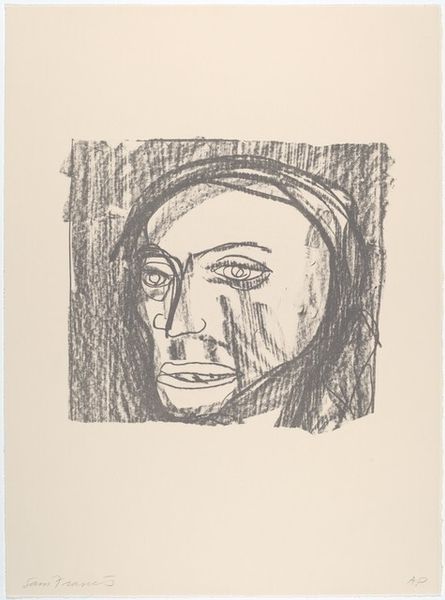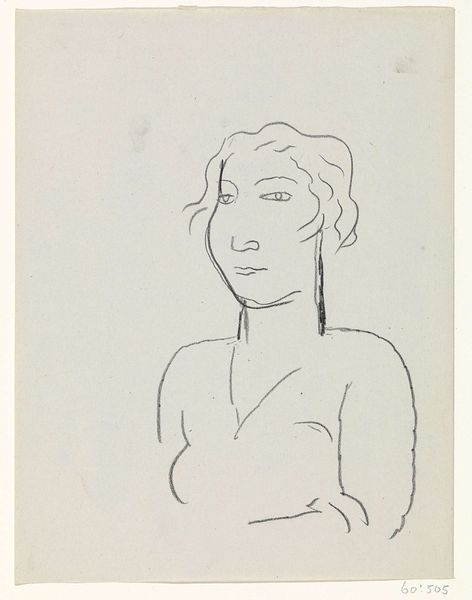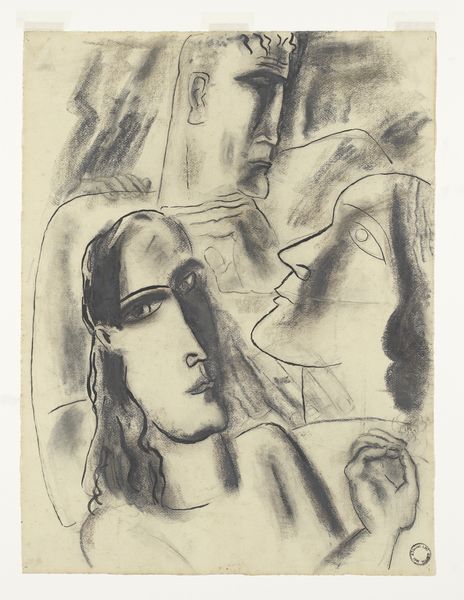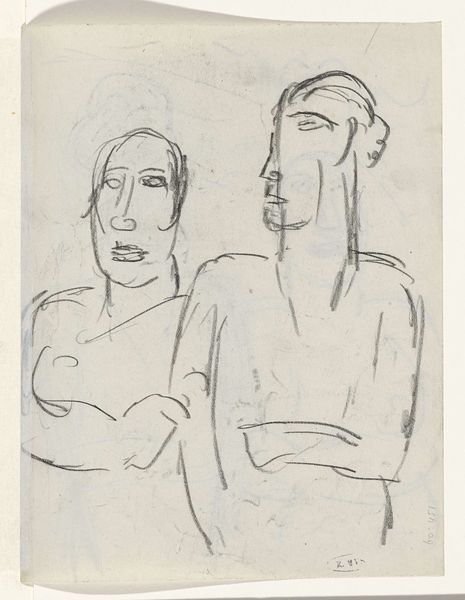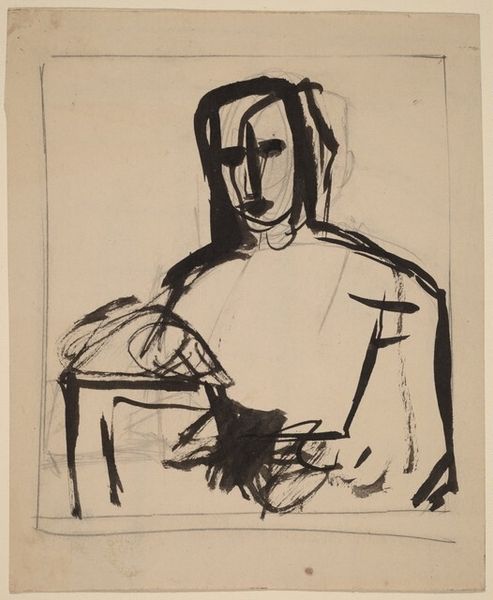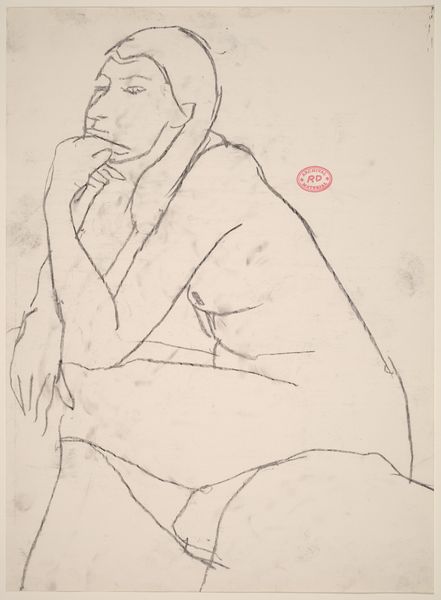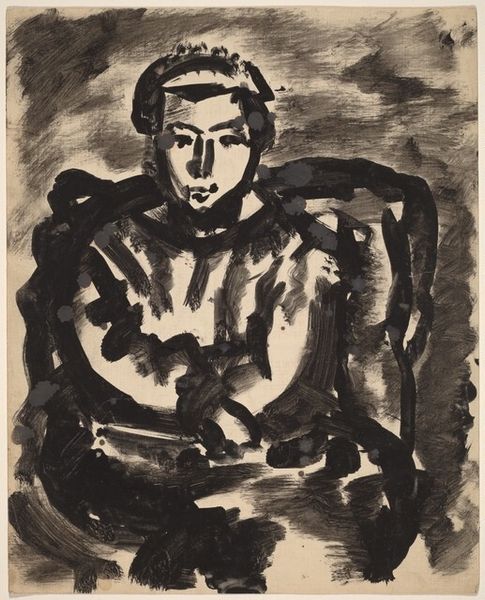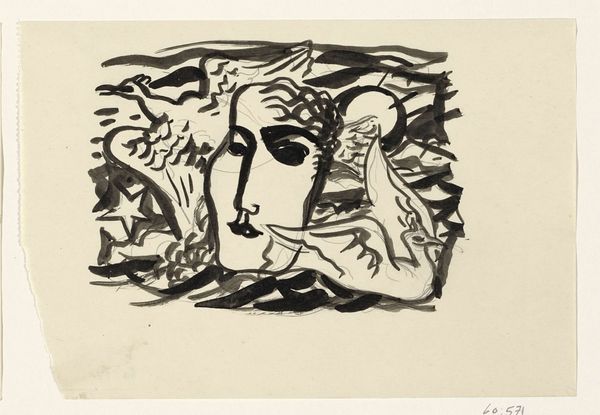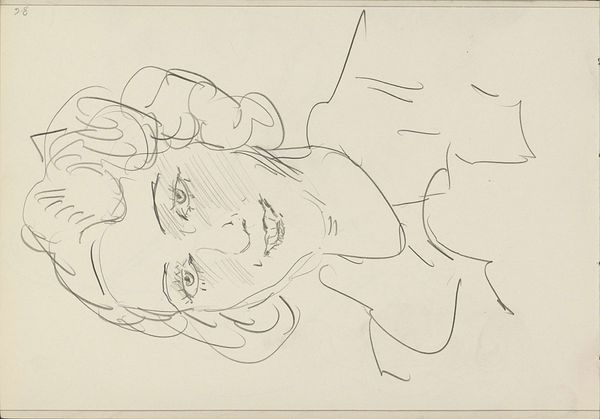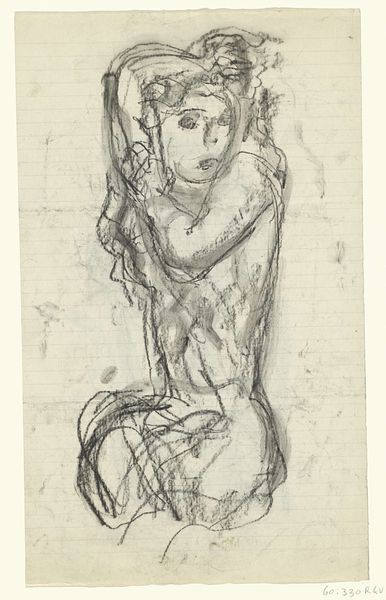
drawing, pencil
#
portrait
#
drawing
#
pencil sketch
#
pencil
#
expressionism
#
sketchbook drawing
#
portrait drawing
Dimensions: height 212 mm, width 163 mm
Copyright: Rijks Museum: Open Domain
Curator: Looking at this work, the immediate impression is one of quiet introspection. There's a stark simplicity, almost haunting. Editor: Indeed. We’re looking at a pencil drawing by Leo Gestel, titled “Standing Woman Before a Window,” dating from sometime between 1891 and 1941. It’s currently held here at the Rijksmuseum. Curator: The window seems less like a source of light or view, and more of a compositional framing element, isolating the woman. And look how the shading of her face divides her features, as if casting the person into an introspective space, reflecting perhaps on conflicting states of the soul. Editor: That division is fascinating. Notice the deliberate use of vertical lines both in the window frame behind her and in the pattern of her dress. Could these lines symbolize constraint or a defined path, clashing perhaps with the implied freedom beyond the window? Curator: Precisely! I'm particularly drawn to her gaze—it’s both direct and distant. What do you make of that asymmetry? I note there's an earlier image faded in behind the subject's ear... perhaps she's haunted by the specters of the past? Editor: An intriguing interpretation. I’d also consider the wider artistic climate in which Gestel was working. The rise of Expressionism saw artists seeking to depict inner emotions rather than objective reality. Her seemingly 'mask-like' features evoke archetypes of silent suffering. Her facial features have echoes of death masks from antiquity, while the subject of isolation may relate to the tumultuous wars erupting. Curator: And in a world consumed by so much tumult, such images can provide quiet solace for the inner mind. I leave here seeing the face more clearly than when I came to see it. Editor: And there’s an interesting duality. While seeming rather incomplete, the emotional content is, somehow, resolved. It reminds me that unfinished visual spaces let each person complete their story, just by seeing a portrait of this woman.
Comments
No comments
Be the first to comment and join the conversation on the ultimate creative platform.


